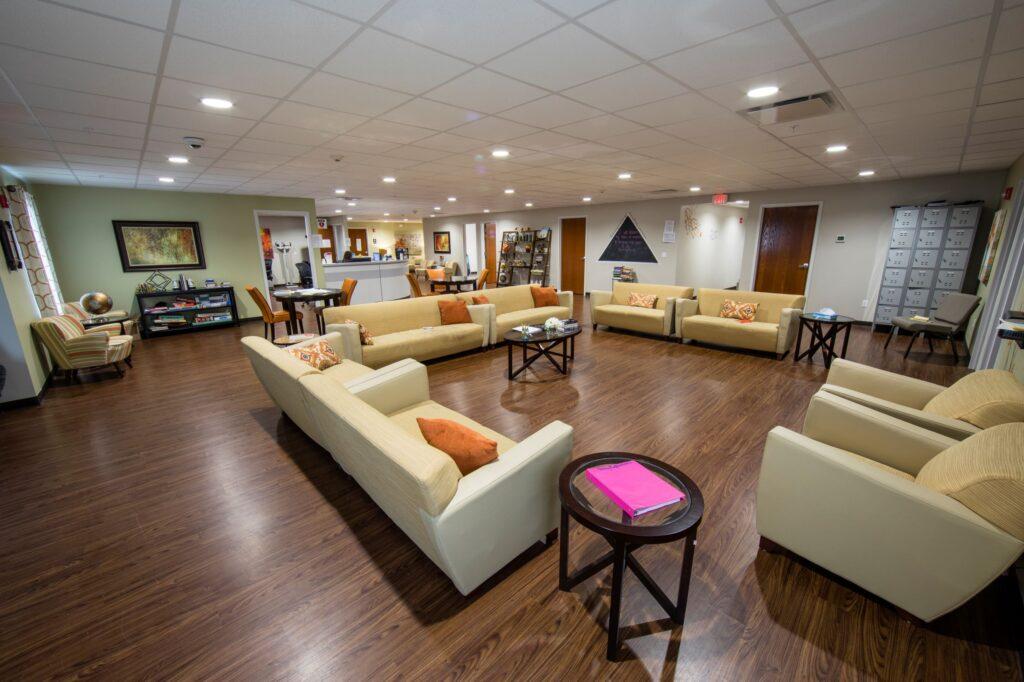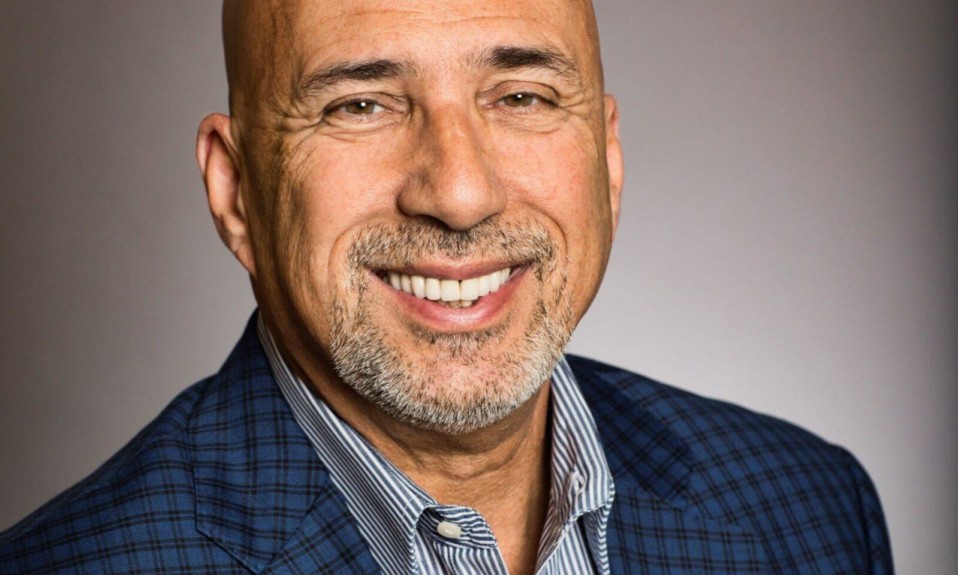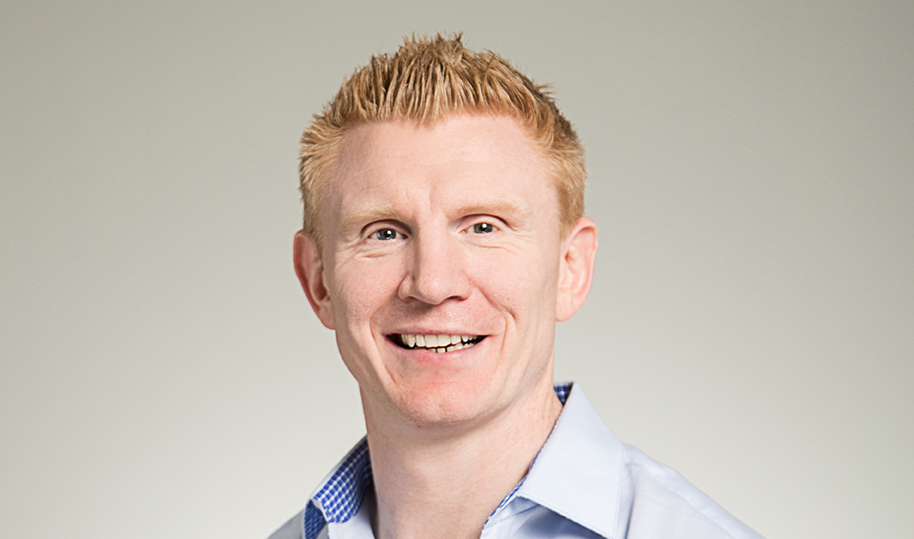The veteran leader believes care must begin where addiction lives—and offers programs and wraparound services deep in the community, prisons and even embedded with other providers
By Jennifer Taylor
October 13, 2020Substance abuse addiction, like a war raging across the nation, is playing out in the personal battles of citizens in urban and suburban areas, rural communities and the open streets of homeless populations. The countermeasure? Treat people battling substance abuse where it’s needed most urgently—in the field.
That’s the philosophy of Joe Pritchard, CEO of Mt. Laurel, N.J.-based Pinnacle Treatment Centers, where the priority for the community-oriented addiction treatment company is to meet patients where they need care. And for Pritchard, a Navy veteran who has been in recovery for 45 years, that has come in the form of contact with homeless populations on the street, admitted patients inside hospitals and people in all corners of communities where help is desperately needed.
“We have a lot of heroes out there in this industry. No matter who they are, what they do or how they do it, they get up and try to do the best they can every day for the addict who is still suffering. To me, they’re my heroes.”—Joe Pritchard, CEO, Pinnacle Treatment Centers
But that’s not where it ends. Pritchard envisions a care model that keeps reaching for people wherever they are struggling. Pritchard recently spoke with TreatmentMagazine.com about his commitment to delivering treatment services in places like prisons, probation departments and community behavioral health centers. That vision has fueled Pinnacle’s exponential growth in recent years and even now despite the coronavirus pandemic.

Currently, Pinnacle is treating more than 31,000 patients across eight states in more than 115 different treatment environments. According to Pritchard, the company is on track to continue growing at 20 to 30% year over year. Pinnacle operates one detox unit at University Hospitals Portage Medical Center in Ohio and eight detox residential treatment centers. The rest of their locations are outpatient addiction treatment centers offering medication-assisted treatment centers, partial hospitalization programs or intensive outpatient programs with recovery residences.
While Pritchard routinely evaluates how to bring services within reach to people, the one constant he’s learned along the way: Never underestimate the power of change treatment gives to individuals who are struggling with this illness.
Q: How did you first get into the addiction treatment field?
A: I’ve personally been in recovery for 45 years. I got sober in the military, in the Navy. When I came out of the Navy, I went to college. And while I was in college, I was able to do an internship at a residential treatment program, which really started to get me passionate about wanting to work with other folks. I was sober for a few years. It just seemed to be aligned with where my passions were. My first job was as a residential tech in a social setting detox on the second shift on Skid Row in Philadelphia. I was working in an environment that’s very challenging; working with a homeless population within a social setting detox that provided medication support. It was basic overnight and comfort support. It taught me from the very beginning the challenges that go along with not just managing through the withdrawals, but all the other associated issues compounded by the social issues of an individual living on the street.
It fueled my passion not only to help but to create pathways for individuals to be able to access care.
Q: Why do you believe Pinnacle is uniquely successful in treating addiction?
A: What sets us apart from some aspects of the industry is:
- One: Our leadership team, both at the senior level and at the regional level, are all very skilled, very experienced operators. We’ve all run programs. We’ve all been in the trenches. We’ve all been involved in driving through adversity and making sure we could deliver care. So as a result, what our field gets is a very skilled and operationally focused support network. This goes all the way up to the board of directors. I have two board initiatives, which are reported on every month and then formally quarterly, and that is employee engagement and patient care. The No. 1 priority for this company is being able to provide the very best care to our patients. Our belief in developing a professional environment for our staff to feel engaged and develop will allow us to do that.
- Two: Our approach has always been that we want to be part of the fabric of the community we’re operating in. So that means well before we open up the program, we sit down with stakeholders in that community from legislators to regulators, the payer, community leaders, thought leaders and other stakeholders in community services. We ask them to tell us what’s working, what’s not, where are the needs, what services are missing. Then we develop programs and services in a clinical pathway that fits for that community. We always go in with the assumption we don’t know what you need. Tell us and we’ll see if we can do it versus let us tell you what we’re going to do for you without even developing those relationships.
- [Three]: removing as many hurdles as possible [from] driving care. That’s both internal and external. On the internal side, we deploy all of the evidence-based medications available. Methadone, buprenorphine and Vivitrol are integral parts of our delivery system. We deliver those medications where we’re allowed to in whatever environment throughout our full continuum. We truly believe that to be the best and meet the needs of our patients, we have to be able to deploy as many of those evidence-based processes as possible within our environment. We’re willing to see patients where they’re willing to accept care. That might not be where exactly they need to be in the care continuum, but our belief is if we don’t at least meet them where they’re willing to accept care, their next option is death. We would rather bring them in at whatever point we can so we can start to engage them in a change process.
“We’re willing to see patients where they’re willing to accept care. That might not be where exactly they need to be in the care continuum, but our belief is if we don’t at least meet them where they’re willing to accept care, their next option is death.”—Joe Pritchard
The external drivers are working at both the federal and state level introducing and driving regulations and legislation that support accessible care. A good example is in Ohio. For many years, there was legislation on the books that required an organization to be a nonprofit to operate an [medication–assisted treatment] program in the state. We worked closely with state legislators for almost two years to get that changed. As a result, [Ohio] went from having 14 [opioid treatment programs] in a state with a population of 11 million to now over 30 and growing. If you compare that to Pennsylvania with approximately the same amount of citizens, Pennsylvania has over close to 90 OTPs. Removing those legislative roadblocks wherever we can increase the ability to drive care. Those are the things we do that set us apart from some of the industry.
Q: What treatment therapies and approaches do your centers use?
A: I’d like to speak to the framework of care from the time of the phone call to full movement of a person going through a care continuum and then after discharge. We believe our process has to wrap itself around that individual and support them through that recovery journey.
We have a call center that is 24/7. You’re going to get a phone call from a person and [our] job is to figure out where they need to be. We’re a community-based organization. Although we might get a few people from outside of our geographic area, almost 100% of our residential program comes within 90 miles and within 30 minutes for an outpatient.

We’re very community-oriented. We do both patient navigation and peer-support recovery. When a person is assigned, we start to wrap our navigators around that individual to help guide that person through the continuum. Then we assign and attach them to a recovery support specialist that is additional support to the care they’re receiving. Those two positions are a constant in that person’s journey. Even though the treatment environment might change and their care provider might change, those two positions or those two people, will not. They have a constant. Those are some of the things we do that a lot of organizations are starting to develop.
The last thing is the “generational development” of services. If you look at our programs, for example, in Ohio, we started with a residential [program] in Columbus. We moved into OTP services, we added partial hospitalization and [intensive outpatient treatment]. Then we go from a hub to more community-based. Our third generation is going within the walls of another organization. We just opened a Recovery Works detox at University Hospital Portage Medical Center, in Ravenna, Ohio, which is part of the Cleveland–Akron area. We know many of the folks we need to treat first enter through a health system in the emergency department. We believe in developing programs and services deeper into the community behind the walls of other providers.
Q: How common is it to have an embedded treatment approach across the country?
A: I don’t think it’s that common. I think what a lot of programs have done, and we’ve done it in the past, is build our own, develop our own, and align ourselves with partnerships with regard to a referral relationship. But, to be able to go from your footprint into somebody else’s and cohabitate, it’s something a lot of folks have talked about doing. Some have attempted it. Some have been successful. The fully developed MAT and the full breadth of what that means within organizations are not that commonplace.
Q: What are you working on innovating at Pinnacle?
A: Part of our development of care within the communities we’re in is doing more of [embedding within other health systems]. We’re also aligning and working with community-based organizations, drug courts, probation departments and jails, driving more of our services within those environments. It’s not just building a detox in a hospital, but how do we take a patient navigator or a peer support specialist or a therapist and help [people] within the walls of the probation department or a community behavioral health center?
“Recidivism back into jails is coming down. Mortality rates are improving. There’s a direct correlation between driving care sooner and having better outcomes.”—Joe Pritchard
How can we take our services and augment what those programs are doing? We’re currently working on those initiatives. We have some underway now in various stages. But again, that’s just part of our overall growth strategy of fully embracing a care model.
Q: Do you think embedding addiction treatment services in drug courts, probation departments and jails would impact the number of people being incarcerated?
A: There’s been a big push to drive more services behind the wall. A lot of the services for years were just ancillary behind the wall and really took effect the day of release. [Communities] are seeing that those services need to be happening while that person’s incarcerated. What they’re finding is recidivism back into jails is coming down. Mortality rates are improving. There’s a direct correlation between driving care sooner and having better outcomes.
How do we get an individual who’s in jail, who has their Medicaid suspended while they’re incarcerated, [good care and more services]? Everyone is starting to see this as something necessary. In California, we’ve been working in [Los Angeles] County and other counties with homeless populations. As you know, in California they’ve taken some of the hotels and created shelters for the homeless. We’re deploying MAT services and wraparound clinical services to that population.
Q: What do you wish you could change about the treatment industry?
A: We need more continuity of care, best practices as well as regulatory guidelines. What happens a lot of times is that you’ll get federal oversight and some high–level regulations that then are interpreted and really changed and implemented at the state level. An organization like ours, from multiple states, will be driving care to the same patient population, but because of different state rules, we have to adjust and modify because of the rules. When you do that, it’s hard to provide consistency in that delivery in the management of risk.
Q: How does Pinnacle measure outcomes?
A: One, is the movement of a patient through the pathway. For example, in our environment 60% of our primary drug of choice in our population is opiates. How many of those folks are then either managed through a withdrawal process with MAT—and then moved into a maintenance program? How many of those individuals that are identified needing maintenance, start maintenance at the first level of care and are successful in moving that down through the continuum? That’s one way we look at it.
Another way is the recidivism rate. How many individuals enter treatment and successfully move through it and do not come back? That is sometimes more challenging because we would like to pull data from that person’s entire life cycle. How many emergency room visits today have they had prior to treatment? How many post-treatment? How many days in jail and on probation? Do they have to present in front of a judge again after treatment? Those are data points that we as a provider do not get. Those are some of the things that if we could collectively take all that data and tie it to a person’s journey, it would allow us to better identify the areas of risk we need to pay more attention to [in order] to help drive better care and better results.
The last thing we look at is the life skill areas around that individual. Are they working? Is their family life more intact? Is their desire to maintain recovery more of a priority than the anxiety of using again? We believe that if we’re on the same common ground with the same initiatives, the person has a better outcome.
Q: Can you speak to the growth Pinnacle is experiencing?
A: We’ve experienced phenomenal growth. This company started in 2006 with four [outpatient] programs in Pittsburgh with about 500-600 patients and a couple hundred employees. We’re treating over 32,000 patients today in eight states in over 125 different treatment environments. We’re on track to continue to grow at 20 to 30% year over year, both through De Novo Development and acquisitions. So we’re seeing a growth process for us that is there because there are lots of needs in the country for services.
Q: Do you attribute that to opioids or anything else specifically?
A: Make no bones about it: There is an opioid epidemic. Opioids have been around for a very, very long time. Alcoholism is still predominantly the illness, the primary drug, that we all are dealing with in our environment and will always be a major part of our focus. I think what the opioid epidemic has done is because of the impact on communities that were just not prepared because they were just blinded to it being an issue in their community. The resources not being able to combat it. But it drove communities into a situation where they had to make some decisions around embracing treatment and bringing resources in, which really helped the industry in driving better care.
I’m a firm believer that things go in cycles, so you’re starting to see methamphetamine come back. Methamphetamine, as you can recall, 15 to 20 years ago was the drug that everyone was talking about. And, it is coming back with a vengeance. Treatment providers have to be broad enough in their scope to treat all.
Q: What is your TTT—your top treatment takeaway?
A: My top treatment takeaway is that even with everything that goes on in the country today, I am absolutely humbled by the passion and mission-driven effort of all care providers in the addiction treatment space.
From somebody working in a community-based grant-supported program to private, self-pay environments, folks get up every day, no matter what the environments are doing to disrupt their day and come in to provide care. People are passionate about driving good care. My takeaway has always been around the commitment and the passion that our professionals have.
Photos: Pinnacle Treatment Centers














